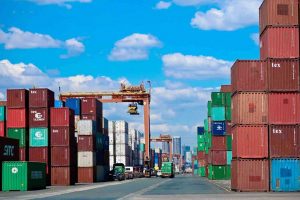The domestic trade in goods in the first quarter grew by 46.7% year on year to P389.42 billion, the Philippine Statistics Authority (PSA) said on Friday.
This was also faster than the 12.8% growth and larger than the P326.56 billion recorded in the fourth quarter of 2023, preliminary data from the PSA showed.
By volume, domestic trade rose by 19.7% to 7.73 million tons in the first three months of the year from 6.45 million tons in the same period a year ago.
However, this was lower than the 8.41 million tons posted in the fourth quarter of 2023.
Commodity flow includes all goods transported by water and air with shipping accounting for the bulk of the commodities.
Cid L. Terosa, senior economist at the University of Asia and the Pacific (UA&P), said in an e-mail that the growth in both value and volume can be attributed to the growth of the economy in the first quarter.
“Domestic trade was fueled by robust domestic consumption spending, which wasn’t constrained as much by inflation since the inflation rate fell within the 2-4% target during the first quarter. Both consumers and producers appeared to have adjusted to the high interest rate environment, inducing greater movement of goods and services across the country,” he added.
The Philippine economy expanded by 5.7% in the first quarter despite easing consumption and government spending.
Inflation averaged 3.3% for the first three months of the year, lower than the 8.3% average recorded in the same period last year and within the Banko Sentral ng Pilipinas’ (BSP) 2-4% target.
Among the traded commodities in the country, food and live animals posted the highest growth in value reaching P225.08 billion in the January-to-March period, 226.3% higher than a year ago.
This was followed by crude materials, inedible, except fuels and animal and vegetable oils, fats and waxes growing by 62.2% and 18.3%, respectively.
Chemicals and related products posted the largest decline with 47.5%, a reversal from the 20.3% growth a year earlier, followed by miscellaneous manufactured articles and manufactured goods classified chiefly by material declining by 44.4% and 27.5%, respectively.
Western Visayas recorded the largest trade balance — difference between outflow value and inflow value — with a P193.68-billion surplus.
It also accounted for the most goods traded by value with an outflow of P223.33 billion, accounting for 57.4% of the total.
The National Capital Region posted the largest inflow value with P160.13 billion, accounting for 41.1% of the total.
Mr. Terosa expects growth to continue next quarter.
“Domestic trade will continue to grow in the second quarter, but at a slower rate due to increasing inflationary pressure. The BSP has indicated that inflation could breach the 2-4% target in the second quarter,” he said. — Karis Kasarinlan Paolo D. Mendoza
